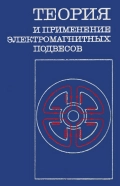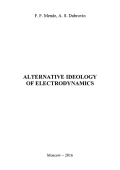The role of the vector potential of magnetic field in the equations of induction is refined.
The concept of the vector potential of electric field is introduced. It is shown what concept is,
as the kinetic inductance of charges plays in the electrodynamics not less important role, than
dielectric and magnetic constant. Is developed the mathematical model of the dispersion of
electromagnetic waves in the conductors and the dielectrics with the use of a physical quantity
of dielectric constant, which does not depend on frequency. It is shown that in the confined
plasma the transverse plasma resonance can exist. They are introduced the concept of kinetic
capacity. Provides a new way to display the wave equation. The way of writing of the equations
of induction with the use by the substantional derivative obtained their symmetrical
form. Is introduced the scalar-vector potential, in which the scalar potential of charge and its
field they depend on speed.. Because of the laws of symmetric induction in the framework of
the laws Galileo transformations obtained conversion fields in the transition from one inertial
reference system to another, called Mende transformation. The introduction of this potential
made it possible within the framework the Galileo conversions to explain the phase aberration
and the transverse Doppler effect, and also power interaction of the current carrying
systems without the use of a postulate about the Lorentz force. Are examined the bases of
trans-coordinate electrodynamics in time-spatial giperkontinuum, in which it is improved the
apparatus for differential calculus of field functions it is introduced the Dubrovin operator.
The results of the experimental studies, which showed, are given that the charge is not the invariant
of speed. Received in return the law of conservation of 4-pulse of the new law of conservation
of angular balance.

